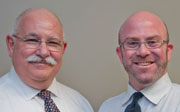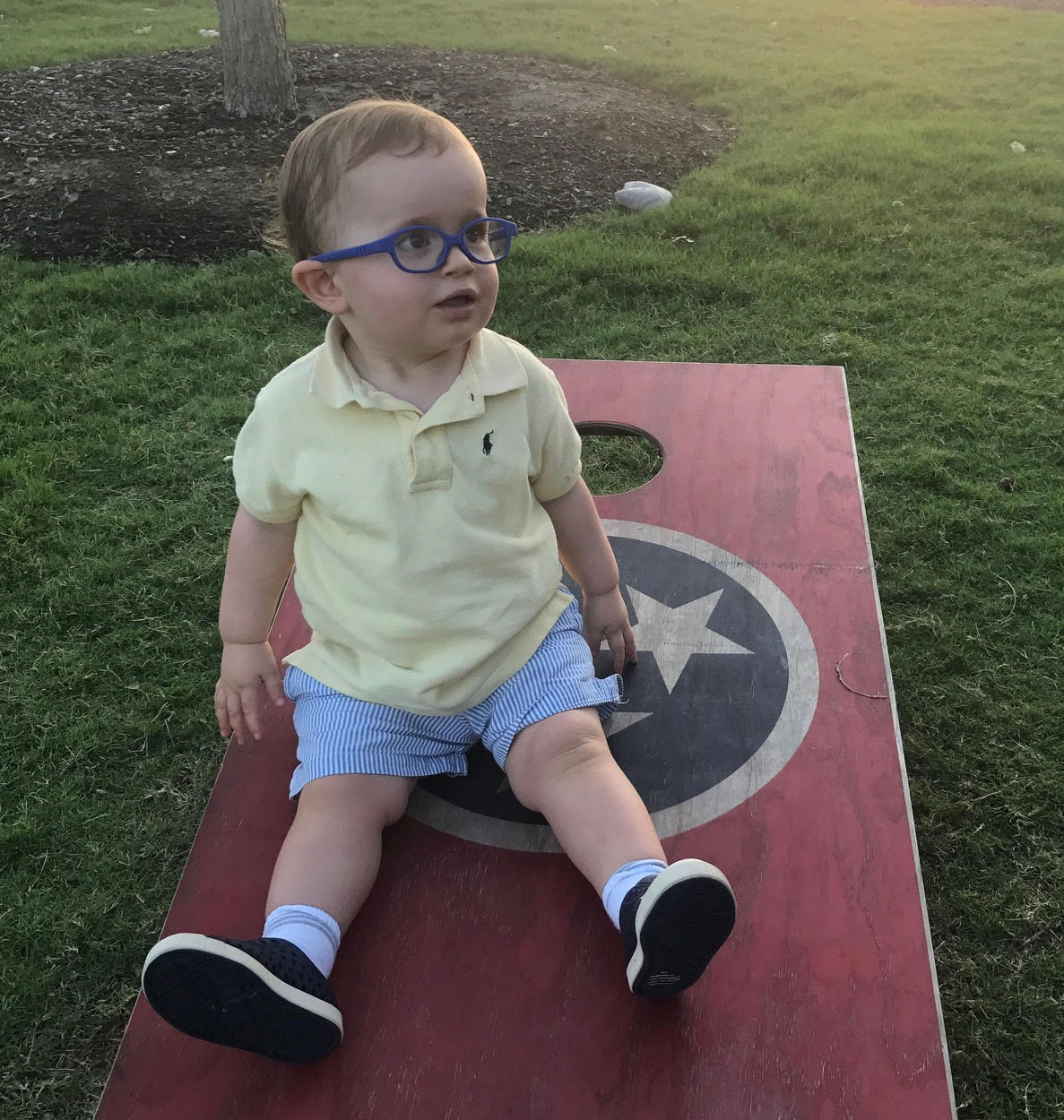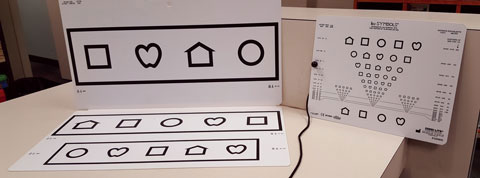 |
In our last installment of this column, we presented the evidence base and theoretical foundation for our approach to prescribing for young children. Now, we give an example to illustrate the points we have covered thus far to help you put them into practice.
The Case
A three-year-old boy presented for his first eye exam. He doesn’t seem to enjoy the same detail-oriented activities his two older sisters had actively engaged in when they were his age, so his pediatrician suggested he come in for a complete visual exam.
The patient’s visual acuities were 20/40 OD, OS and OU at distance and 20/50 OD, OS and OU at near with Lea symbols, as he didn’t know his letters yet. He was squirmy in the chair, and just getting him to hold the paddle over his eye was a challenge. We ended up using an opaque patch, which we held in place with one hand to keep his head pointed forward. We’re sure you’ve all had this type of kid in your chair!
 |
| We prescribed glasses to begin correcting our patient’s high degree of hyperopia. Click image to enlarge. |
Cover testing showed low exo to ortho at both distance and near. His eye movements were full and comitant in all directions of gaze. We used the new Functional Binocular Assessment Test (FBAT) to assess binocularity.1 He grabbed for the largest pictures, the hippo and the teddy bear, by reaching his hand out in space away from the cards, showing gross stereo and rudimentary binocularity at the very least. This also confirmed our cover test findings and observations of alignment through eye movement testing.
As soon as we completed retinoscopy, it hit us that we were dealing with a significant amount of hyperopia. Though one of us prefers the monocular estimation method (MEM) and the other leans toward stress-point retinoscopy (SPR), both tests offer similar insights. With MEM, plus is only applied to one eye, and often the patient just switches their attention to the other eye and doesn’t let the full lag go. With SPR, plus is applied binocularly using flippers, and a target is brought in toward the patient from the plane of the retinoscope.2 If the reflex remains bright white and balanced and the target can be brought in about four inches closer to the patient before their reflex changes, we keep adding plus. In this case, the MEM was +3.00D and the SPR was +3.50D. We both knew there was more, but not how much more. Houston, we have a problem!
Distance retinoscopy showed +3.50D at distance in both eyes, and damp retinoscopy (tropicamide) showed +4.25D at distance in both eyes. The patient’s visual acuity didn’t improve significantly with either of these lens options. We attributed this to the fact that he’s probably had some degree of blur his whole life and that he isn’t very good at precisely pointing his eyes at targets. When a patient has a high degree of hyperopia that has gone uncorrected for a long time, like in this case, we don’t always see the desired response as soon as we prescribe some plus. Often, only after the lenses are worn for a period of time do we see the patient begin to calm down, cooperate better with testing, focus more accurately on things and tune into more detail.
 |
| Lea symbols are a good option for patients who don’t know their letters yet. Click image to enlarge. |
How Much is Too Much?
Plus was needed to help this child. Now we ask ourselves how much we should give. We know that at the age of 36 months, we only need to act on hyperopia above +2.50D.3 Taking into account the most plus we found, +4.25D, the maximum plus we could leave uncorrected is +2.50D. Then we would leave it to emmetropization to help correct the hyperopia over time. The minimum would be +1.75D. However, based on our years of experience with these kinds of cases, we had our suspicions that there was more hyperopia that we had yet to detect, which would only reveal itself as we followed up with the patient.
We also had to factor in the results of the FBAT, cover and eye movement testing. Had any of these tests shown a tendency for an eso shift or had the patient reported seeing double vision during testing, then we would consider giving more plus. Taking all of these findings into consideration, we thought it was best to begin with +2.25D single vision glasses to be worn full-time.
Before finalizing the prescription, we put this lens power on the patient and conducted just-look retinoscopy at near. We had the patient look at certain points as we watched him reach for objects in space. His reflex remained bright throughout the process and got brighter just before he came into contact with each object. This is a nice confirmatory test to help us feel confident in our course of action.
We asked that the patient return in three months, expecting to see more plus that would necessitate new lenses. We are certain that if the glasses are worn as prescribed, future exams will yield more comprehensive and accurate results that we can work with.
Our goal is to not push our patient too far into hyperopia. Based on our clinical experience and the published literature, the best way to do this is to begin with partial plus and add more if needed over time. The opposite approach—prescribing full plus as measured at distance now and continuing to fully correct as more is revealed—seems to leave patients with far more hyperopia as adults. We hope that our patient stabilizes and begins to experience less hyperopia, allowing him to be less dependent on eyewear throughout his life.
| 1. Bernell. Bernell Functional Binocular Assessment Test booklet. www.bernell.com/product/BCFBAT1/Free_Space. Accessed May 4, 2020. 2. Good-Lite. OEP retinoscopy set. www.good-lite.com/Details.cfm?ProdID=892. Accessed May 4, 2020. 3. Taub MB, Harris P. Prescribing For Young Children. Rev Optom. 2020;157(4):26-7. |

